Do you find yourself going through an absurd amount of paper towels every week cleaning up spills? Single-use items are often favoured for convenience, but they come at a cost. These reusable paper towels are an eco-friendly alternative that is absorbent, easy to make and will save you money.

Each week I would purchase a pack of paper towels for $6.00, which amounts to $312.00 per year. By switching to reusable paper towels, we can now save this money for other things like a holiday. Over time, it’s easy to ignore small purchases, but now you can see how even something as small as paper towels adds up.
Paper towels may seem like an eco-friendly product, but the paper and pulp industry consumes 4% of the world’s energy and ranks fourth for greenhouse gas emissions. It takes a shocking 20,000 gallons of clean water to produce one tonne of paper towels. Not to mention all the plastic they are packaged in.
Sadly, paper towels can’t be recycled because they are dirty, so they end up in landfills another reason why reusable options are better.
As you can see, swapping to reusable paper towels was a no-brainer for me and will hopefully encourage you to switch too.
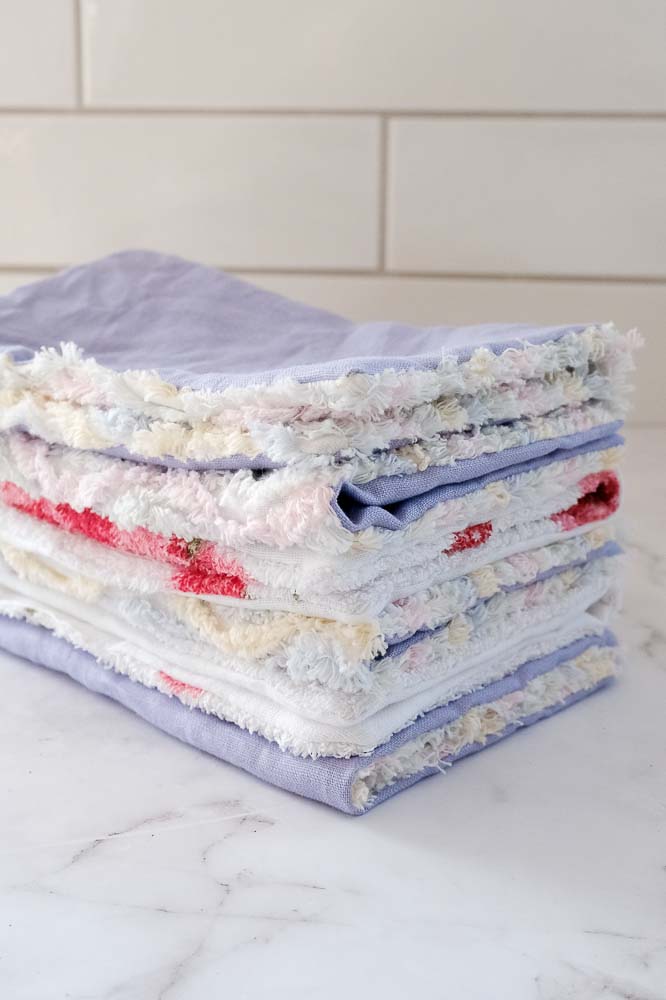
Why You Should Switch to Reusable Paper Towels
- Better for the future of our planet
- Easy to make in less than 5 minutes
- A great way to repurpose old towels
- Save hundreds of dollars every year
Paper towels became prominent in the 1930s because they were marketed as a convenient and sanitary item that could be used in the kitchen and then thrown away. Before this, households used fabric cloths like reusable paper towels, which worked perfectly fine.
Unpaper towels are just as effective as paper towels if you use suitable materials. A cotton material like terry cloth is perfect for cleaning because it is absorbent and dries quickly, reducing the potential for bacteria build-up.
If you have old towels, flannels or tea towels lying around your home, you can use these for your reusable paper towels. They are usually made from 100% terry cloth cotton. It’s a great way to repurpose things you already have and help reduce your household waste. Plus, why spend your hard-earned money on cleaning towels?

How to care for unpaper towels
These unpaper towels need to be washed and dried like any other home cleaning cloth. It’s not as convenient as throwing a paper towel into the bin, but the point of these is to reduce single-use items in your home.
My trick is to keep a bucket in my laundry slightly filled with water and eucalyptus essential oils. I pop any dirty, unpaper towels and rags into this bucket until I have enough to wash in my machine. This is usually every two days or so.
Eucalyptus essential oils are a natural antibacterial and disinfectant that helps stop the towels from getting smelly.
The Best Fabric For Reusable Paper Towels
- Cotton
- Linen
- Bamboo
- Cellulose fibres such as Tencel, Cupro, or Modal
These are arguably a fancier version of a rag but will last longer because the material is seamed on the edges reducing the fraying or weakening of the fabric fibres.
Stick to the fibres listed above for the top of the unpaper towels. Both cotton and linen have antibacterial properties and are durable fabrics that will last a long time. Since these are cleaning cloths, it’s important to use stronger fibres, so they don’t fall to bits or rip.
I found fabric scraps from other sewing projects to sew mine out of, but repurposed sheets or clothing will work too.
On the bottom, use terry cloth because it soaks up liquid well. This can be old towels, flannels, or old kitchen tea towels that are worn out or no longer used.
It’s best to avoid synthetic fibres because they don’t absorb well and are made from toxic chemicals like oil and plastic. Read my blog about Types of Fabrics and Materials with Names and Pictures to learn more about fabric fibres.
As lovely as it is to buy new materials, these will be used to clean spills or messes, so try to be resourceful and repurpose what you can. Head into second-hand shops and buy towels to repurpose if you don’t have any in your home.

How to use unpaper towels in your home
Use these as you would a paper towel. I like to use mine with this homemade natural all-purpose cleaning spray to wipe surfaces after spills occur. Depending on what you are cleaning or wiping up, these can be reused a few times before washing.

My tip is to make a spot for these in your kitchen, somewhere accessible or appealing, like in a cute basket, so you are more inclined to reach for them. I also recommend keeping a bucket or small container handy to pop them into when they are dirty, so this doesn’t become a huge chore.
Never wash these with fabric softener, as it can make them less absorbent over time. Wash with your regular detergent and hang up to dry. Rotating them will be easy enough if you make a decent pile of these.
How To Sew DIY Reusable Paper Towels
Step One: Cut out fabric
Cut out one top and one bottom rectangle at 23cm x 30cm.
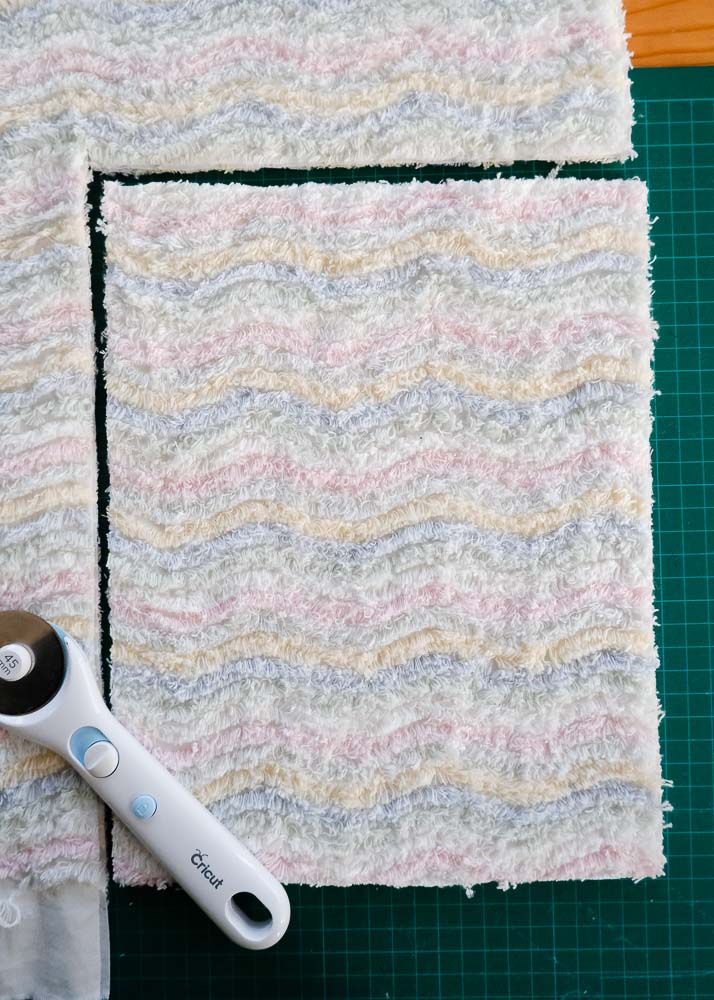
Step Two: Pin layers together and sew around
Place the right sides of the fabric together and pin. Sew around the outside edges with a 1cm seam allowance, leaving a 5cm gap in the seam.
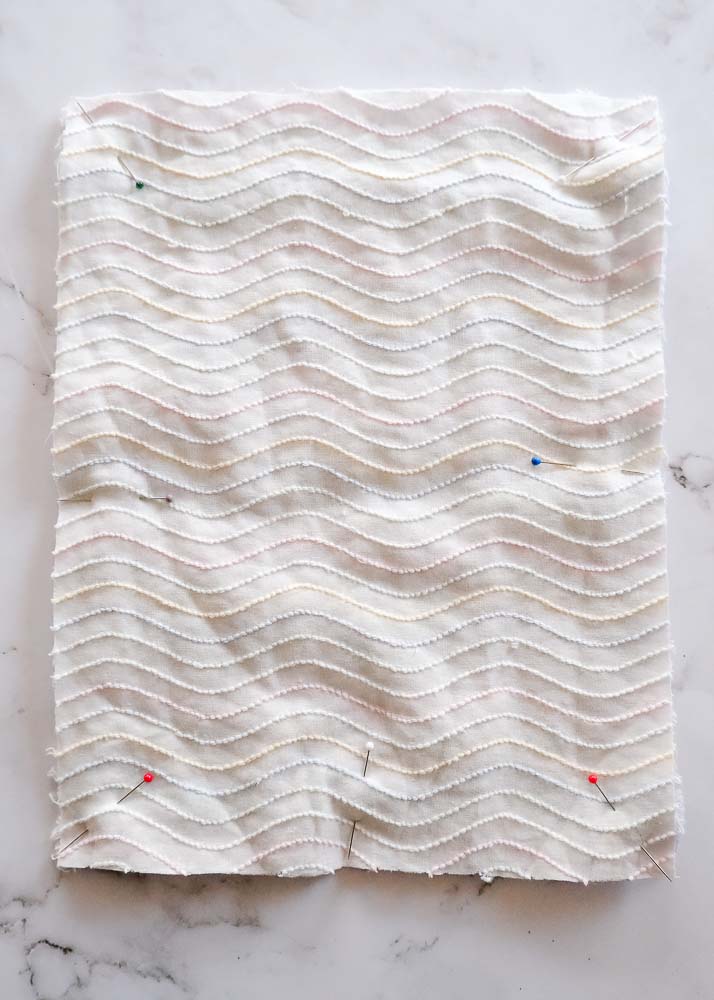
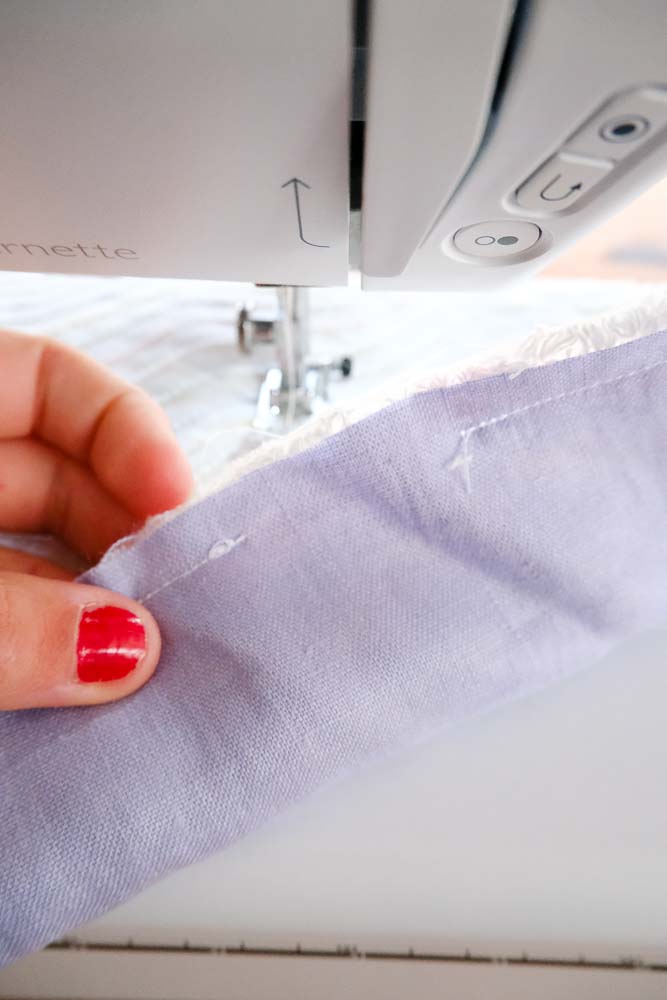
Step Three: Trim and turn to the right side
Trim the corners and turn the reusable paper towel to the right side. Wiggle out the corners. Press flat with an iron.

Step Four: Close the open seam and use
Edgestitch or hand stitch the seam opening closed. Use in place of paper towels and throw them into the wash when dirty.

If you enjoyed this sewing project, please consider leaving a review for others to read.
More Home Sewing Projects
- How To Make Pot Holders
- DIY Ruffle Check Cushions {Heather Taylor Inspired}
- How To Make A Apron
- How to Sew a Pillowcase with Ruffles
- How To Make Coasters From Fabric
- How to Make a Drawstring Bag
Reusable Paper Towels diy (Unpaper Towels)
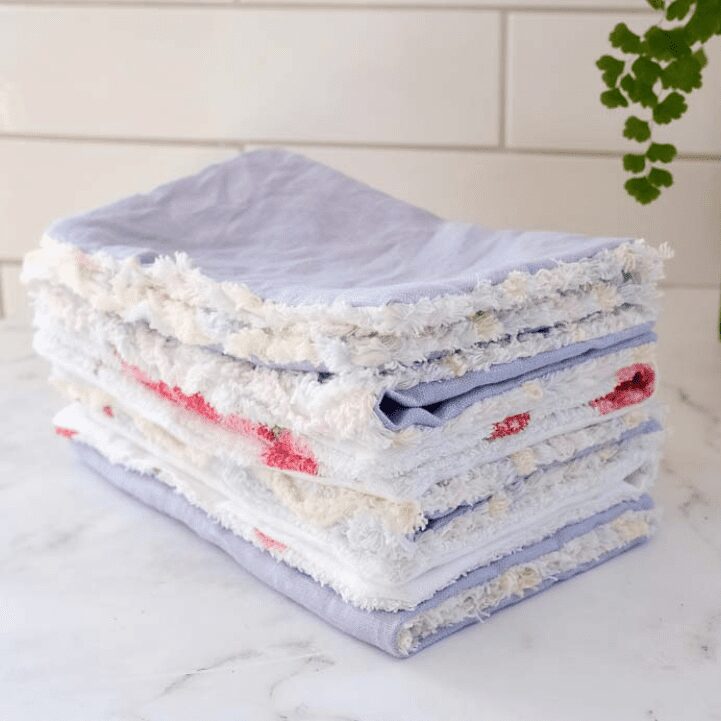
Do you find yourself going through an absurd amount of paper towels every week cleaning up spills? These reusable paper towels are an eco-friendly alternative that is absorbent, easy to make and will save you money.
Materials
- 1 x piece terry cloth, 23cm x 30cm
- 1 x piece top fabric, 23cm x 30cm
Tools
- Fabric shears or rotary cutter & mat
- Sewing machine
- Pins
- Matching Thread
Instructions
- Cut out one top and one bottom rectangle at 23cm x 30cm.
- Place the right sides of the fabric together and pin. Sew around the outside edges with a 1cm seam allowance, leaving a 5cm gap in the seam.
- Trim the corners and turn the reusable paper towel out to the right side. Wiggle out the corners. Press flat with an iron.
- Edgestitch or hand stitch the seam opening closed.
- Use in place of paper towels to clean up spills and throw them into the wash once dirty.
Notes
- How can I get the corners to be sharp and pointed?
The corners may not sit right when you turn the unpaper towel to the right side. You can simple wiggle these out until they sit sharper or use something pointed like a knitting needle to push them out. - I found fabric scraps from other sewing projects to sew mine out of, but repurposed sheets or clothing will work too.
- On the bottom, use terry cloth because it soaks up liquid well. This can be old towels, flannels, or old kitchen tea towels that are worn out or no longer used.
- It’s best to avoid synthetic fibres because they don’t absorb well and are made from toxic chemicals like oil and plastic.
- Never wash these with fabric softener, as it can make them less absorbent over time. Wash with your regular detergent and hang up to dry. Rotating them will be easy enough if you make a decent pile of these.
Hi, I’m curious how / why these are better than just using a normal rag without a sheet backing sewn on? My rags pretty much all have seen hems anyway.
Hi Teagen, Thanks for your comment. Theres no right or wrong kind of ‘unpaper’ towel to use. If you have suitable rags already then thats perfect and will work just the same. This project is more if you have nothing to use but had some old towels and fabric cuttings laying around. It’s a good way to use them with a purpose in mind. Thanks!
Thanks, I have just made a bunch with sewing fabric scraps and old towels. I slipped a short length of ribbon in to either side of the edgestitched hole for a hanging loop so I can keep a few clean ones next to my teatowels
What a great idea to add ribbons Rose! Thanks for sharing 🙂